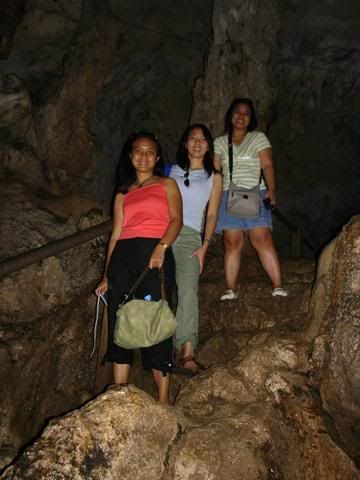

We slept most of the way and when I opened my eyes I noticed that we were already passing by several of the famous marine rock formations. Scattered around the municipalities of Carmen, Batuan and Sagbayan, are the similarly-shaped 30 to 50-meter high molehill structures called Chocolate Hills.
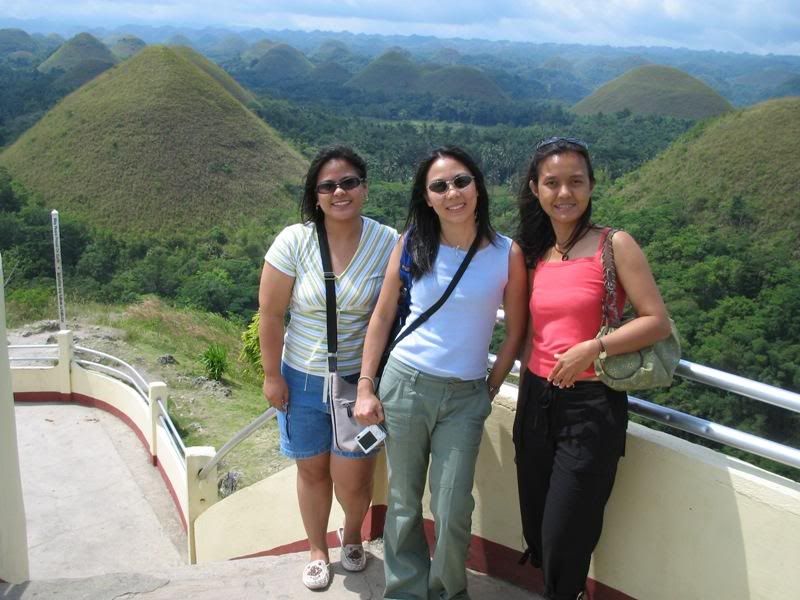
The view of the hills on the viewing deck is quite spectacular. I call them choco-mint hills.. as they’re quite green-brown in color actually. Their marine stone base makes it quite difficult for trees to grow on top, although there are still some small trees that manage to survive. Mostly small and big plants make up their foliage thus their brownish color, especially on hot summer days when the shallow-rooted foliage dry up.
We passed by the Man-made Mahogany Forest on our way to Sevilla Hanging Bridge then headed towards Loboc. After our wonderful one-hour riverboat ride and lunch down the green waters of Loboc, we walked towards the store where tarsiers in captivity are being displayed to tourists.
I’ve been googling this tiny goggly wonder for several minutes while a young couple took turns getting photographed with it.
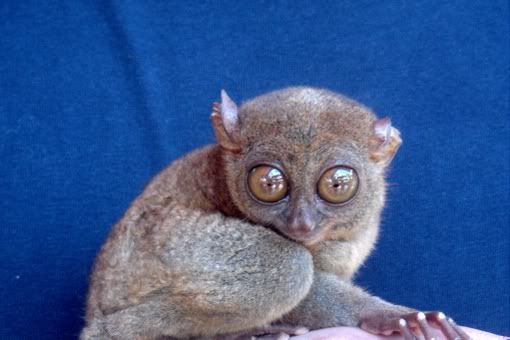
My two friends meanwhile were taking pictures of the rangy others clinging to the San Francisco plants. I, too, managed to photograph them cling-ons…
If you look at them intently, you’ll notice that they have frog-like legs, sticky gecko-like fingers, bat-like ears and owl-like eyes. Ohh, their eyes are so astounding.. you won’t miss them. Hahaha… Actually their huge chestnut eyes cannot move. Like an owl, the tarsier has a joint between its skull base and spine to allow 180 degree head movement. And when I held one, I noticed that its tail was so much like that of a rat. But it was so adorable while I held it. It felt so cuddly, I almost placed it inside my bag to take back home with me. And even when we were already on the way back to the city, I still wanted one so much. Oh if I could only keep one. But they are said not to live long in captivity as these tiny critters are very susceptible to stress (noise, pollution, etc.)... and knowing me.. I’m not really the caring pet lover kind so all the better for little Tarsy.
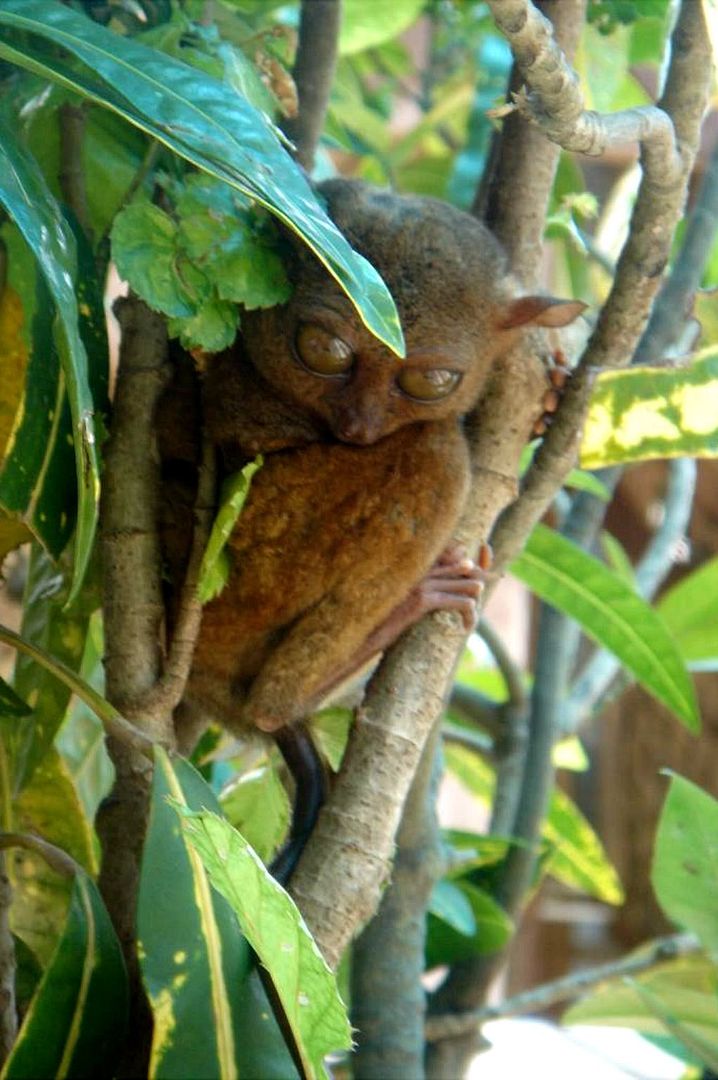
And then I learned that the Philippine tarsier is in the Red List of endangered species. Of course, I had to learn more about them. So here’s added info for those of you who are planning to visit the tarsiers of Bohol one day. There are now 7 formally-recognized species of tarsiers. The one here in the Philippines is of the Tarsius syrichta type, uniquely found only in the central Philippines like Bohol, Samar, Leyte and somewhere in Mindanao. They are so named due to their special elongated tarsal bones. The padded tips of their digits, their elongated hindlimbs and tail let them adapt well to an arboreal lifestyle. Their long, thin, tufted tail actually serves as a balancer and prop. Tarsiers are nocturnal in nature. But those kept in captivity, like the ones we visited, have already adapted to a diurnal life due to being constantly awakened by the owners to be petted by visitors (like me). But a sanctuary is being built in Corella Bohol where they are kept in their natural habitat. As my way of helping that tarsiers don’t eventually die off this planet, I just donated to the owners. These animals are insect eaters. They say donations go towards buying their food. (I hope!) Hopefully, too, this little blog of mine will help spread the word about not buying tarsiers and keeping them as pet. See, I’ve learned. Let us allow them to grow and live naturally, and let them multiply their numbers.
Did you know?
- A tarsier often makes contact by seizing its mate's tail. The Philippine tarsier may sit with their tails intertwined.
- A tarsier's life span is about 13 years.
- Although they live in areas where snakes are common, snakes are rarely killed by them. A snake detects its prey by snesing body heat, and it is thought that a tarsier decreases its body temperature while sleeping, a time when it is most at risk.
To learn more about tarsier the following links may be helpful:
Primate Factsheets: http://pin.primate.wisc.edu/factsheets/links/tarsius
BundokPhilippines: http://www.geocities.com/Yosemite/3712/tarsier.htm Tarsier Org: http://www.tarsier.org/
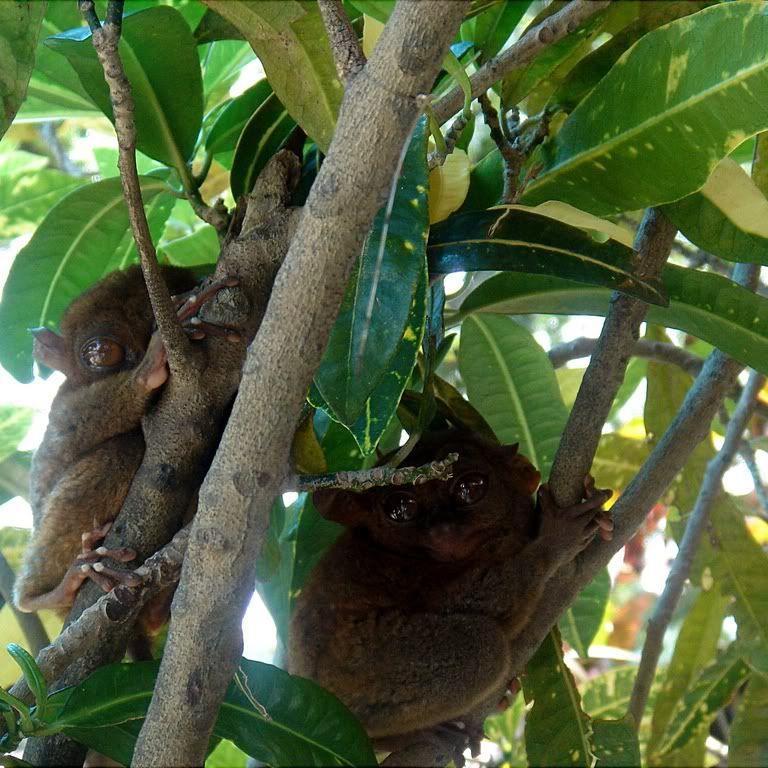

4 comments:
Great pictures! I was just passing through, hitting the "next blog" button, but I enjoyed reading about your little furry buddy. Nice glog, keep it up!
nyikes, kilala kita! haha! didn't know you have a blog na pala! :) if you didn't link to foodfabulous, i wouldn't have known! :)
I love your blog.... it reminds me of my wonderful bohol experience.... I would like to invite you to share your experience to the rest of the world by posting it in Lakbay Pilipinas blog...
http://www.lakbaypilipinas.com/blog
Mabuhay ka,
melo villareal
+63918-6167049
nice pics abby!
Post a Comment